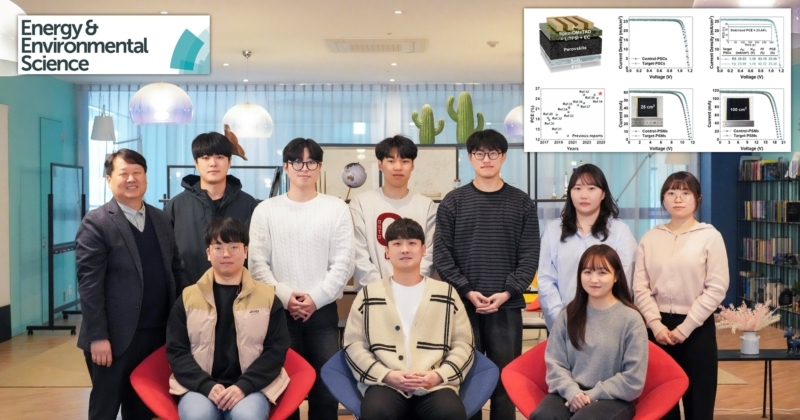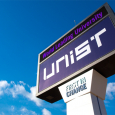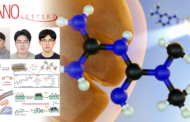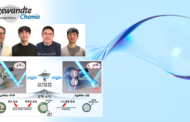A new perovskite solar cell (PSC) has been unveiled, demonstrating remarkable resilience even in steaming hot conditions, thanks to an innovative protective film. The research team suggests that these findings represent a significant step toward commercialization by addressing thermal stability issues.
A research team, led by Professor Dong Suk Kim at the UNIST Graduate School of Carbon Neutrality, in collaboration with Professor Tae Kyung Lee from Gyeongsang National University (GNU), has successfully engineered a heat-resistant PSC capable of withstanding high-temperature encapsulation processes. This innovative solar cell demonstrated a remarkable initial efficiency of 25.56% and maintained over 85% of its initial efficiency after operating under conditions of 85°C and 85% relative humidity for up to 1,000 hours.
Perovskite solar cells, regarded as next-generation energy solutions, theoretically possess higher efficiencies in converting sunlight to electricity than conventional silicon cells, while also being more cost-effective. Although laboratory efficiencies have already surpassed 27%, preventing these cells from reaching commercialization has been primarily attributed to their heat stability. Unlike silicon cells, which can tolerate the high encapsulation temperatures needed to prevent moisture and oxygen from degrading the cell, perovskite cells have struggled under conditions that exceed 110°C.
To overcome these challenges, the research team replaced the conventional additive 4-tert-butylpyridine (tBP) with ethylene carbonate (EC) in the composition of the PSCs. While tBP improves efficiency, it significantly lowers the glass transition temperature (Tg) of the hole transport layer to below 80°C, compromising the stability of the cell in high-temperature environments. The glass transition represents the point at which the hole transport layer becomes nearly liquid.
The resulting cell produced a power conversion efficiency (PCE) of 25.56%—the highest among tBP-free solar cells. The efficiency remained virtually unchanged after undergoing the encapsulation process. In tests conducted under international standards at 85°C and 85% relative humidity, the encapsulated cells exhibited exceptional durability, maintaining 21.7% efficiency even after 1,000 hours. The glass transition temperature of the hole transport layer was also elevated to 125°C.
Even when scaled up to a module area of 100 cm², the solar cells maintained a high efficiency of 22.14%. This achievement is attributed to the ability of ethylene carbonate to uniformly dissolve lithium bis(trifluoromethanesulfonyl)imide (LiTFSI) dopant, which enhances charge transport performance in the hole transport layer, improving overall solar cell efficiency.
Professor Kim emphasized, “Through this research, we have developed a hole transport layer system that retains high efficiency while ensuring stability in high-temperature and high-humidity environments.” He added, “This represents a significant step toward the practical application of perovskite solar cells.”
The research involved contributions from Dr. Yun Seop Shin and integrated master’s and doctoral students Jaehwi Lee from UNIST, as well as Dong Gyu Lee from GNU. The study was supported by the Ministry of Science and ICT, the National Research Foundation of Korea (NRF), and the Ministry of Trade, Industry and Energy (MOTIE). The findings were published in Energy & Environmental Science (IF: 32.4) on April 7, 2025.
Journal Reference
Yun Seop Shin, Jaehwi Lee, Dong Gyu Lee, et al., “Damp-heat stable and efficient perovskite solar cells and mini-modules with tBP-free hole-transporting layer,” (2025).












